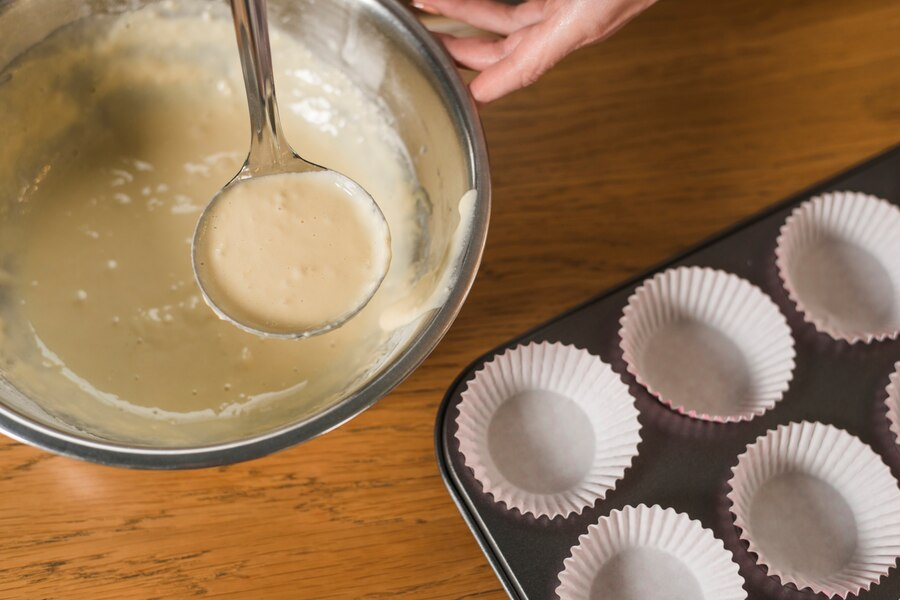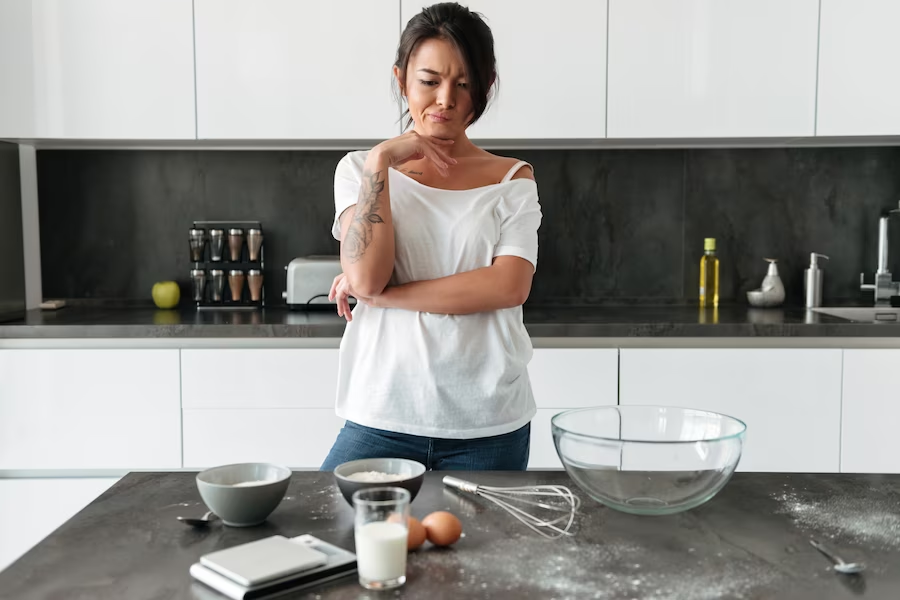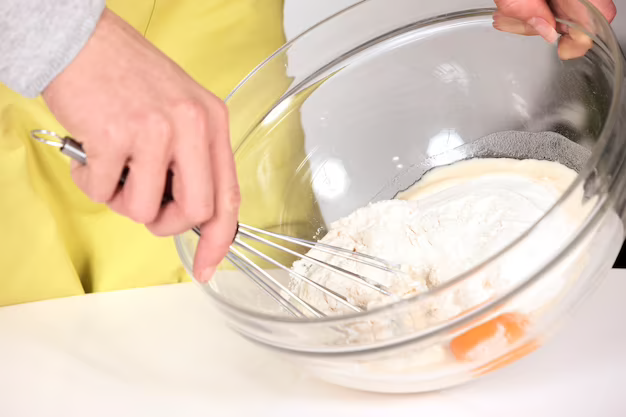Baking a cake can be a delightful and rewarding experience, but it often requires careful planning and time management. One question that frequently arises is whether it’s possible to make cake batter ahead of time. Can you prepare the batter in advance and store it for later use without compromising the final product’s taste and texture? In this article, we’ll explore the ins and outs of making cake batter ahead of time, discussing the benefits, potential pitfalls, and best practices to ensure your baked goods turn out as delectable as ever.
Benefits of Making Cake Batter in Advance
Preparing cake batter in advance offers a range of advantages that go beyond just saving time. From enhanced flavor development to consistent texture, this practice can elevate your baking game and make your special occasions even more memorable.
Time Efficiency
Baking a cake involves a series of intricate steps, from measuring out precise ingredients to mixing them into the perfect consistency. However, attempting to complete all these tasks on the same day can often lead to stress and rushed results. By making cake batter in advance, you can break down the process into manageable steps. This approach not only reduces the pressure on the baking day but also allows you to maintain a relaxed and organized baking environment.
Enhanced Flavor Development
One of the most captivating benefits of letting cake batter rest is the opportunity for flavor development. This phenomenon is particularly pronounced in recipes that incorporate ingredients like rich chocolate, aromatic spices, or vibrant fruits. When cake batter is allowed to rest in the refrigerator, the flavors intermingle and deepen over time. This leads to a heightened complexity in taste, turning an ordinary cake into an extraordinary culinary experience that delights the palate.
Consistent Texture
Texture is a hallmark of any well-crafted cake, and achieving a consistently tender and moist crumb can sometimes be a challenge. Allowing cake batter to sit prior to baking can be a game-changer in this aspect. Some cake recipes benefit from a period of hydration, during which the dry ingredients absorb moisture from the wet components. Preparing the batter ahead of time facilitates this hydration process, resulting in a more even distribution of moisture. The outcome is a cake with a velvety, uniform texture that is a joy to indulge in.
Convenience for Special Occasions
Imagine having a cake batter ready to go when you’re planning a special event or celebration. The convenience this brings is unparalleled. With the batter already prepared, you can focus your energy and attention on other aspects of the event preparation, such as decorations, setting the ambiance, and attending to your guests. This added convenience not only minimizes stress but also allows you to present a freshly baked cake that’s not only visually stunning but also incredibly flavorful.
Considerations and Potential Pitfalls

Creating the perfect cake is a delightful art, blending flavors and textures into a delectable masterpiece. However, the path to cake perfection isn’t without its challenges. Imagine the scenario: you decide to prepare your cake batter ahead of time, eager to save valuable minutes on the day of baking. While this strategy can be a lifesaver in a busy kitchen, it’s important to navigate the potential pitfalls that come with this approach. Let’s dive into some considerations that will help you achieve cake excellence even when preparing the batter in advance.
1. Leavening Agents: Ensuring the Rise
Picture a cake emerging from the oven, gloriously risen with a soft and tender crumb. The secret behind this elevation lies in leavening agents such as baking powder and baking soda. These culinary magicians create the delightful rise that gives cakes their signature fluffy texture. However, when preparing cake batter in advance, there’s a dance of chemistry to be aware of. Over time, the efficacy of leavening agents can diminish, potentially leading to a cake that doesn’t rise as anticipated. The result? A denser, less ethereal cake that might not live up to your baking dreams.
| Potential Pitfall | Solution |
|---|---|
| Diminished leavening power | Consider using slightly more leavening agents than your original recipe calls for, ensuring your cake rises to the occasion. |
2. Ingredient Separation: A Texture Tango
As you embark on your cake-making adventure, it’s essential to remember that certain ingredients have a flair for separation. Imagine a batter containing luscious ingredients like butter and eggs. These culinary partners in crime can, unfortunately, lead to a separation or settling of the batter over time. The fats within the batter can solidify, causing a departure from the silky consistency you initially sought.
| Potential Pitfall | Solution |
|---|---|
| Ingredient separation | Gently stir the prepared batter before using it to bake. This will help reincorporate any separated ingredients and restore the desired consistency. |
3. Freshness: The Flavor Factor
In the world of culinary magic, the freshness of ingredients is a cornerstone of success. While the convenience of preparing cake batter in advance is undeniable, don’t underestimate the impact of using fresh ingredients. The flavors that dance on your taste buds and the textures that caress your palate are intimately tied to the quality of your ingredients.
| Potential Pitfall | Solution |
|---|---|
| Loss of flavor and texture | Opt for the finest and freshest ingredients available. This ensures that your cake maintains its exceptional taste and mouthwatering texture. |
4. Overmixing: The Balancing Act
Crafting the perfect cake batter is a symphony of technique. However, one misstep in this melodious dance can lead to a less-than-ideal outcome. Enter the villain: overmixing. Vigorous stirring can lead to the development of gluten, the protein that provides structure. Too much gluten development can result in a cake that’s unexpectedly tough and chewy, rather than the desired delicate crumb.
| Potential Pitfall | Solution |
|---|---|
| Overmixing the batter | When combining the pre-made batter for baking, use a gentle and light touch. Fold the ingredients together just until combined, avoiding excessive mixing. |
Best Practices for Making Cake Batter Ahead of Time

Preparing cake batter ahead of time can be a convenient way to streamline your baking process, but it requires careful consideration and execution to ensure the end result is nothing short of delectable. To achieve a moist, perfectly risen cake, here are some meticulously crafted best practices:
Choose the Right Recipe
Not all cake recipes are created equal when it comes to prepping batter in advance. Opt for recipes that have a certain level of flexibility, as they are less likely to be negatively affected by the resting period. Moist, dense, and forgiving cake types like pound cakes, carrot cakes, and banana breads are great candidates.
Plan the Timing
One of the keys to successful make-ahead batter is picking a recipe that’s compatible with your timeline. Some recipes demand immediate baking after mixing, so it’s crucial to read the instructions thoroughly. Select recipes that allow the batter to maintain its structural integrity and flavor profile even after some resting time.
Storage
The Airtight Haven After expertly combining your ingredients, the next step is to transfer the batter into an airtight container. This cocoon of protection shields the batter from exposure to air and moisture, preserving its freshness and ensuring that no undesirable flavors seep in.
The Art of Re-mixing
When the time comes to turn that batter into a scrumptious cake, the process doesn’t simply end at pouring. Gently remix the batter to guarantee all ingredients are harmoniously integrated. While thorough mixing is vital, excessive agitation can lead to an undesirable texture. Find the balance that produces the finest result.
Leavening Agents
A Balanced Equation For recipes that heavily rely on leavening agents like baking powder or baking soda, it’s a smart move to incorporate a touch more than the original recipe calls for. This compensates for any potential loss of effectiveness during the resting phase. Striking the right balance ensures your cake achieves the desired rise and fluffiness.
Temperature Control
The Chill Factor The refrigerator becomes your cake batter’s loyal companion during its resting period. Maintain a consistent temperature by storing the batter within the chilly embrace of the fridge. Avoid leaving it at room temperature for extended periods, as this could lead to unexpected spoilage and unwanted changes in texture.
Conclusion
Making cake batter ahead of time can be a convenient strategy to streamline your baking process and enhance flavors and textures. However, it’s crucial to choose the right recipe, follow best practices, and be mindful of potential pitfalls. With proper planning and execution, you can enjoy the benefits of preparing cake batter in advance while still delighting in the delectable results of your baking endeavors. Remember, practice makes perfect, so don’t hesitate to experiment and find the approach that works best for you.
FAQ
The ideal time frame varies depending on the recipe and ingredients. In general, it’s best to prepare cake batter no more than a day or two before baking.
Freezing cake batter can be tricky, as some ingredients might not react well to freezing and thawing. It’s safer to refrigerate the batter for short-term storage.
Not all cake batters are suitable for preparing ahead of time. Dense batters or those with intricate chemical reactions might not yield the desired results if prepared too early.
It’s best to store cake batter in the refrigerator to prevent the growth of harmful bacteria. Leaving it at room temperature for extended periods can pose food safety risks.
If the batter has an off smell, unusual texture, or visible signs of mold, discard it. Trust your senses and prioritize food safety.
